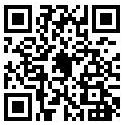The course gives a brief introduction into modern theory of Diophantine Approximation. Together with classical and basic facts we will deal with some recent results in the topic and discuss some unsolved problems.
The course is devoted to several important one-and multi-dimensional problems in Diophantine Approximation. We will study different continued fractions algorithms, methods of Geometry of Numbers, metrical Number Theory and related topics. Among the problems under consideration we deal with Diophantine spectra, uniform approximation, irrationality measure functions and approximation in higher dimensions.
Target Audience:
Undergraduate students
Graduate students
Teaching Language:
English
Nikolay Moshchevitin
Professor Nikolay Moshchevitin received his Ph.D. in 1994 from Moscow State University in Russia. Since 2011 he is one of the managing editors of the Moscow Journal of Combinatorics and Number Theory. He works mostly in Diophantine Approximation, Geometry of Numbers and related topics. Among his students there are such known mathematicians as Andrew Raigorodskii, Oleg German and Ilya Shkredov. He solved several well-known problems, in particular he solved Wolfgang Schmidt's problems on the behavior of successive minima of a one-parameter family of lattices and constructed a counter-example to another Schmidt's problem related to approximation with positive integers. He will be teaching an introductory course in Diophantine Approximation.
Prerequisite
Standard undergraduate courses in calculus, linear algebra and basic course in elementary Number Theory.
Reference
1. J. W. S. Cassels, An introduction to Diophantine approximation, 1957
2. W. M. Schmidt, Diophantine Approximation, 1980
3. T.W. Cusick, M.E. Flahive, The Markoff and Lagrange spectra, 1989
4. A.M. Rockett, P. Szusz, Continued fractions, 1992.
5. O.N. German, Geometry of Diophantine exponents, Preprint available at arXiv:2210.16553 (2022)
6. N. Moshchevitin, On some open problems in Diophantine Approximation, Preprint available at arXiv:1202.4539(2012)
7. N. Moshchevitin, Khintchine singular systems and their applications Russian Math. Surveys 65 (2010), no. 3, 433–511.
Registration

扫描二维码或